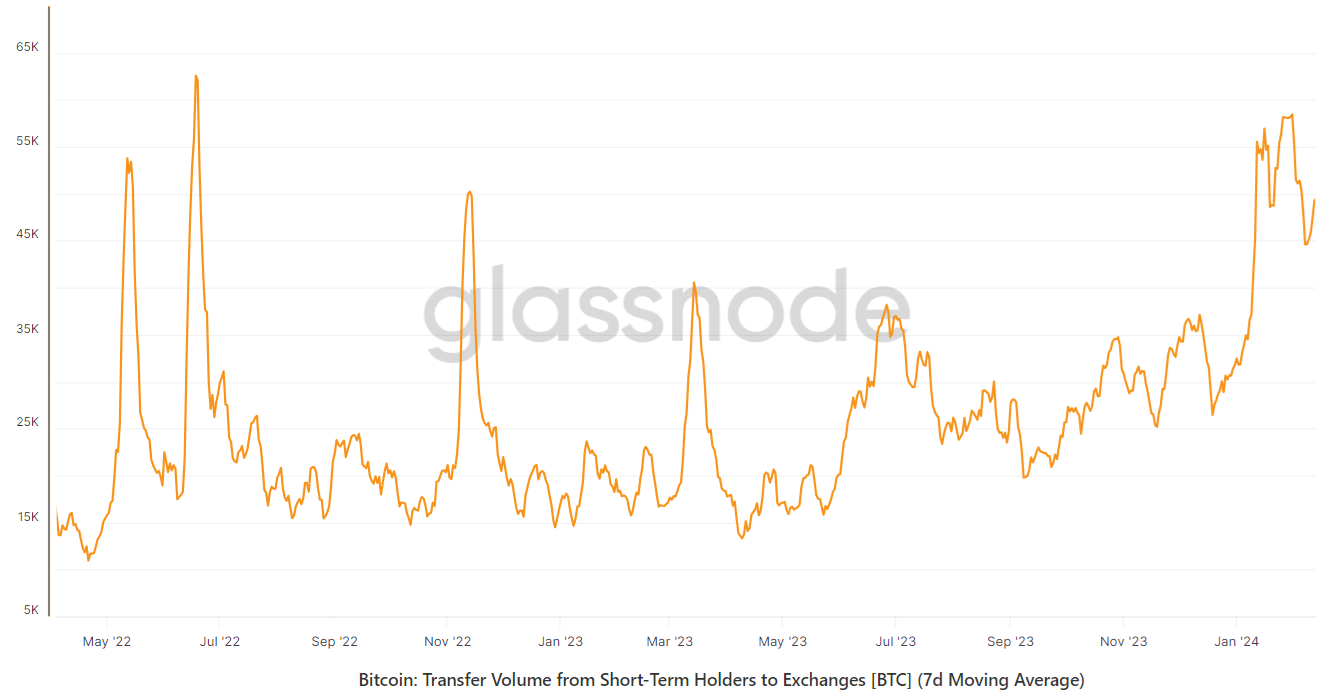Bitcoin price has soared by 21% in the last 7 days, hitting $52,000 for the first time since December 2021. The price increase is primarily attributed to the influx into spot Bitcoin exchange-traded funds (ETFs), which peaked at $631.3 million on February 13. Investors are speculating whether the depletion of token reserves at over-the-counter (OTC) desks has led to spot purchases on regular exchanges, creating an imbalanced situation that supports the upward momentum.
Notable Bitcoin Data Points
While having a significant spot market position is crucial for businesses, this position is often hedged using futures contracts. Similarly, intermediaries can turn to the order books of spot exchanges and futures contracts to fulfill demands, meaning not every OTC transaction requires a buyer and seller.
Consequently, if spot Bitcoin ETF issuers added a net 1.84 billion Bitcoin last week, other institutions must have sold the same amount. Long-term holders, those who haven’t moved their assets for over 6 months, are generally less likely to sell after a price rally. Therefore, analysts look to on-chain analysis to roughly gauge how resilient the market can be amid volatile movements as an indicator of investor strength and confidence.

Data shows that short-term holders, those who funded addresses less than 6 months ago, significantly increased their transactions to exchanges last week, averaging 49,504 Bitcoin per day. In contrast, long-term holders only sent an average of 2,023 Bitcoin per day during the same period, indicating that the primary sellers were short-term holders. Despite 79% of the supply being held by long-term holders, potential sales can occur rapidly.
Why Is Bitcoin Rising?
It could be argued that whales, who bought Bitcoin in anticipation of a spot ETF launch, are now active on the selling side, making it difficult to achieve higher surges. However, the data suggests otherwise. Excluding very large whales representing institutions and holding over 100 Bitcoin, investors from all classes became net sellers in the last 7 days.

These investors added a total of 20,168 Bitcoin worth over 1 billion dollars, which can be attributed to spot Bitcoin ETF issuers like BlackRock, Fidelity, BitWise, Ark 21Shares, and others. Although the sustainability of this influx is uncertain, the data indicates that demand for ETF products increases as the Bitcoin price rises, providing strong support for the upward momentum.
The data reveals that a rally above $55,000 is no longer solely dependent on individual flow. Consequently, indicators that previously reflected outcomes, such as Google search trends or the Fear and Greed Index, may not accurately represent the risk appetite of institutional investors and the subsequent demand for Bitcoin.
While short-term Bitcoin holders rapidly moved assets to exchanges, the price climbed from $42,900 to $52,000 within 7 days. Unless long-term holders decide to reduce their positions beyond a certain price level, all signs point to a weakening supply side and the potential for further gains above $52,000.

 Türkçe
Türkçe Español
Español









